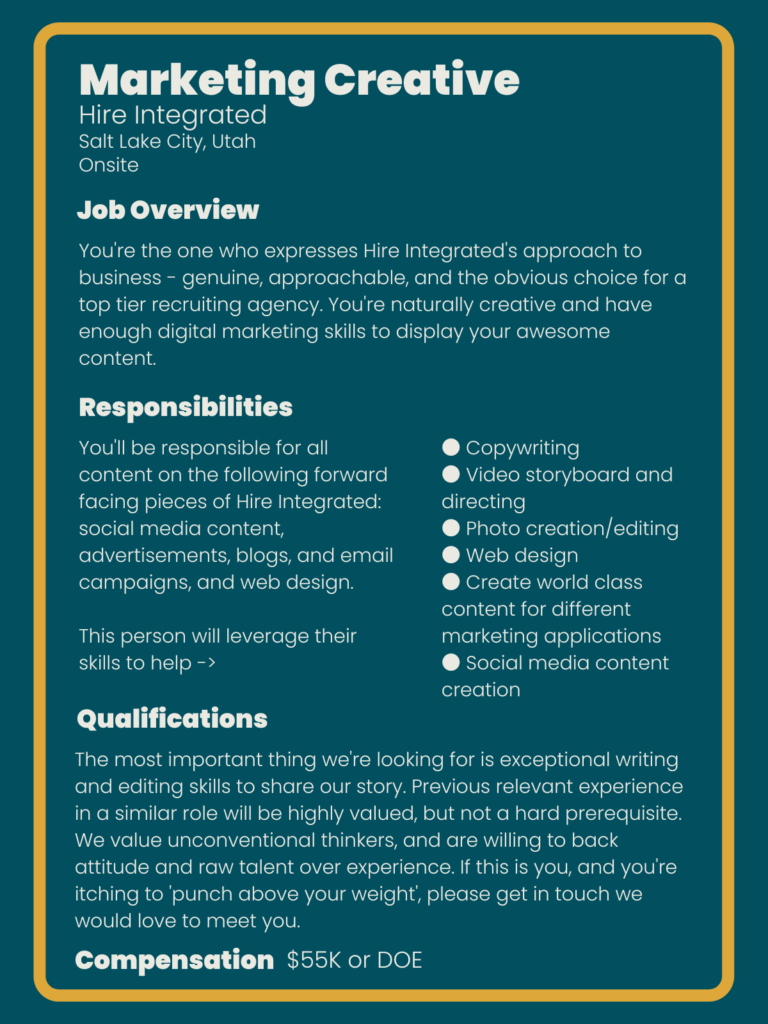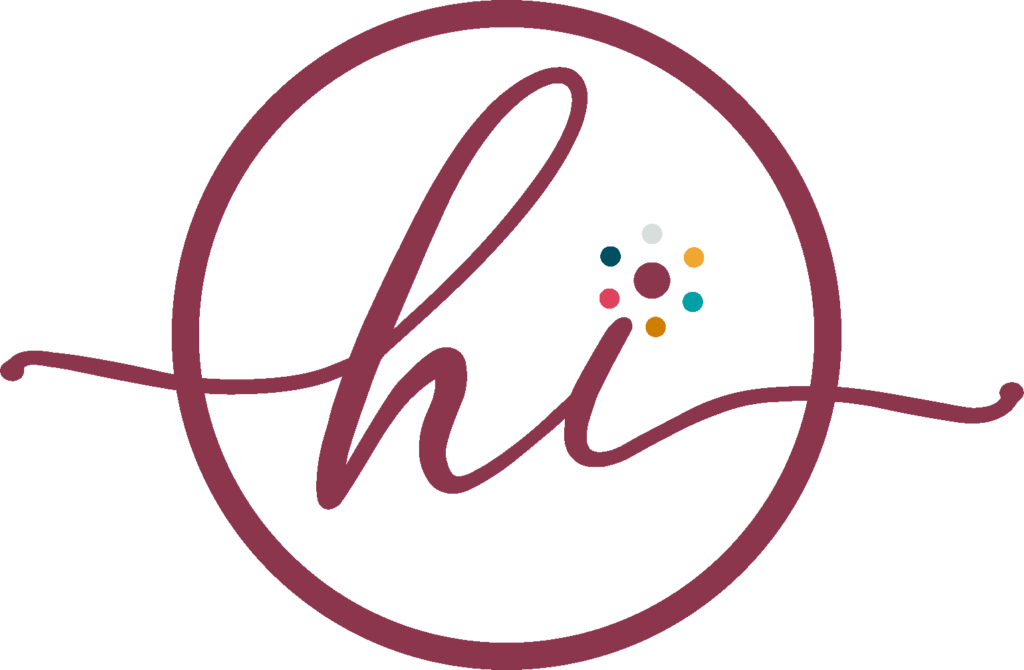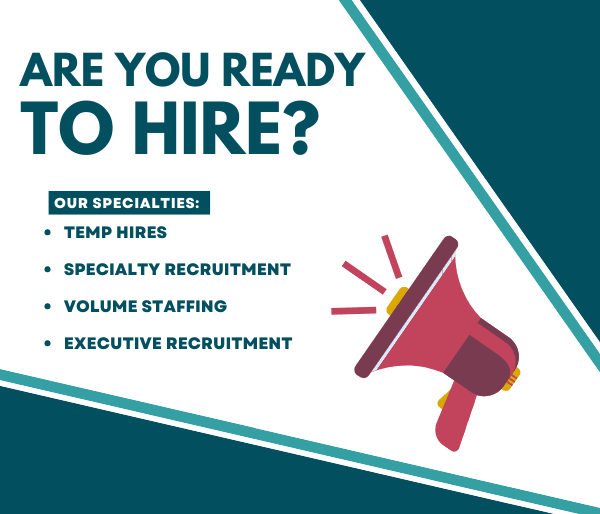Last Updated on September 20, 2024
It’s obvious that job descriptions are crucial to attracting the best job candidates. Sometimes it can even feel like writing a sales pitch. You need to write a compelling and informative job description to get the best and most candidates for your open positions.
How do you write a job description? Better yet, how do you write a perfect job description? You can find the answers below! This article will explain general job description tips, work through a step-by-step guide for writing job descriptions, and include a job description template.
Quick Links
Job Description Tips
To begin, here are a few general guidelines that you should keep in mind as you begin to write job descriptions. Keep these ideas in mind as you go to write your job description as they will be fundamental for writing a great job description.
Check Out Global Job Boards: Let’s start with a quick hack: Before going to write a job description, browse similar openings on global job boards. It can be remarkably helpful. This tactic can be particularly beneficial if you’re hiring for high-level roles or are not quite sure what to write for the job opening.
Understand the Psychology: From a psychological standpoint, the most important things for a person reading a job opening are these three questions:
- Is this job opening relevant for me?
- Would it be exciting to work in this role?
- Am I qualified to apply for the job?
Test Posting Multiple Job Openings: Another hack for getting more job applicants is to publish multiple job offers with different titles. You can create two near-identical job openings with different titles and they will both attract varying candidates. Around 60% of the applicants for both jobs will most likely duplicate each other, but the remaining 30-40% will be the extra people you managed to bring to your hiring funnel.
Mention All the Perks You Can: It is always a good idea to list all the employee perks in your company. However, the truth is that the top-performers are not joining your company for nice-to-have perks. Above all, they will join because of the company’s mission, personal growth potential, and a great team.
However, adding the perks to the end of your job openings doesn’t hurt.
Here are a few ideas:
- The number of paid vacation days
- Company get-aways & summits
- Healthy food and snacks
- Great office location
- Paid conferences & work travel
- Parental and family leave
- Healthcare benefits
- Paid gym membership
If you are working on a job that offers flexibility – advertise it! According to LinkedIn’s 2019 report, there’s been a 78% increase in job offers mentioning flexible work.
SEO Hacks: You have to post the link in at least (5) online sources – social media will help you with this greatly! And you have to mention the (commonly title positions name) at least 5 times throughout the job description.
Include a “Standout from the Crowd” Section: Everyone expects to see “responsibilities” and “requirements” sections but add a “stand out from the crowd” section. This explains why your business or the company you are recruiting for will add more value to the candidate than other organizations.
Examples:
- Here’s why you’ll love working here
- If you consider yourself (insert bullets here) then apply today
- What your future coworkers are saying about working in this department or with this company (insert reviews).
How to Write a Job Description: Step by Step
To begin, you need to have a correct understanding of the position. In some cases, this might require hands-on research. Depending on your role in the organization, you might be able to interview employees in this position, give them surveys to complete, or observe employees working. Another method is online research. Researching similar positions online can be very beneficial to developing a holistic understanding of the position.
On the other hand, you might already have a working knowledge of the position. In that case, the research phase of this step can be omitted. Just ensure that you have a proper, updated understanding of what the role entails before continuing.
Once you understand the job well enough to craft the job description, here are the elements of an excellent job description:
1. Job Title
The job title is a 1–4-word description of the job that explains the purpose and scope of the position. Below the job title you should include the location of the position as well as whether the role is remote, hybrid, or onsite.
2. Job Overview
This section is typically a couple of sentences that briefly explains the purpose of the position. It should provide the reader with a high-level overview of what the position is and why it exists.
3. Responsibilities
The “Responsibilities” section goes into greater depth of the duties associated with the job. These should be the items that will consume the bulk (if not all) of the employee’s time at work. As you write each bulleted item, be sure to include the why behind the action. The candidate should understand the deeper purpose behind the task as they read through the job description.
4. Qualifications
This section includes skills, education, and experience. As with most other sections of the job description, there is some flexibility in the way you organize the qualifications. Some job descriptions divide qualifications into two sections, preferred and required, while others group everything together.
Decide which format would be most appropriate for your job posting. Education and experience traditionally fall under the qualifications section, but they can be their own section as well if it would be more appropriate for your job listing.
5. Compensation
As much as businesses do not like to share this, a job listing with a salary is a huge plus for job seekers. In fact, LinkedIn reports that 61% of job seekers claim that the details about compensation are the most important part of the job description.
6. “Stand Out from the Crowd” Section
If you want to differentiate yourself from the thousands of other job postings on the internet, then you need to include what makes your company and job opening special. It can be beneficial to include a section that talks about company culture, benefits, or other perks. This shows what you can provide a candidate beyond the competition.
7. Physical Requirements/Working Conditions
This section might not be necessary for every role. If needed, explain if the opening has any requirements like lifting a certain weight or prolonged periods of sitting. The company dress code could be mentioned here as well.
Simple Job Description Template
Feel free to copy and paste this template and use as you wish. This template includes the general structure that you should follow for job descriptions. However, job descriptions are incredibly flexible to the unique needs, character, and culture of every organization and role. Be sure to adjust this template accordingly.
[Job Title]
[Location]
[Onsite, Hybrid, or Remote]
Job Overview:
[Brief description of the role, how to be successful in the position, and how it fits into the company]
Responsibilities:
[List different responsibilities in present tense. Use gender neutral language. Put the most important duties first.]
Qualifications:
[Include the following as necessary: education level, experience, specific skills, soft skills & attributes, licenses, certifications]
Compensation:
[State the salary/salary range for this role]
Benefits & Perks:
[As mentioned before, use this section to talk about benefits, unique perks, and why the candidate will love working at your business]
Job Description Example
Want an example of what a job description could look like? Check out this job description for a Marketing Creative. This is a great example to work off of, but be sure to create a job description that is personal to your company and your unique needs.

How to Write a Job Description: Conclusion
Now that you have all this information in your toolbelt, you are ready to go! Be sure to reference this resource and other online resources as you develop your job descriptions. Best of luck in your recruiting efforts!
Need more recruiting advice? Check out our blog.
Read More On Related Topics

Emily Rushton, Founder and CEO of Hire Integrated, has over a decade of experience in recruitment, helping companies solve high-volume hiring challenges. Her unique, storytelling approach has made her a trusted leader in the industry, helping both businesses and candidates succeed.









